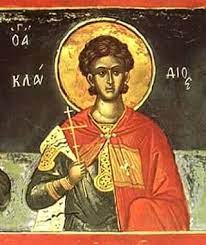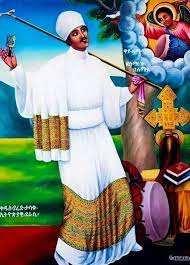The blessed and pure seer of the mysteries of heaven Lalibela (surnamed Gebre Meskel), King of Ethiopia died on June 19. The parents of this Saint having begotten him, they raised him with the trepidation of God. At the age of his adulthood, he arrived at man’s estate. His elder brother who was a king heard of his inheritance of the kingdom. He sits upon his throne, jealous. He then sent and called him. When Saint Lalibela came, stood up before him and contrived a matter against him. After that, he commanded his servants to beat him with very many stripes, from the third hour of the day to the ninth hour.








